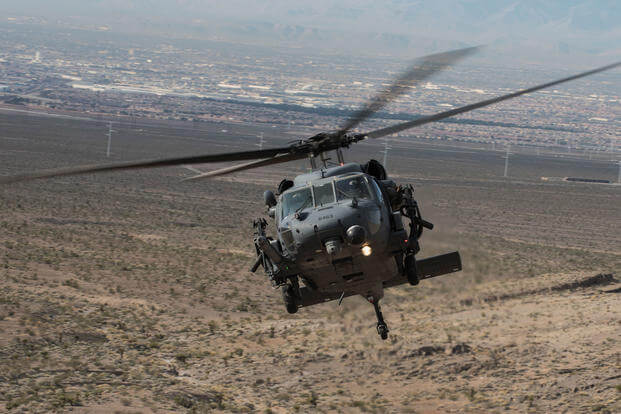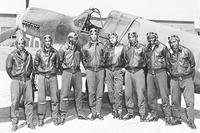HURLBURT FIELD, Fla. -- If the U.S. Air Force were to realign the combat search-and-rescue (CSAR) mission under Air Force Special Operations Command, the reason would go beyond funding, timing or similar operational duties.
It makes sense only if it makes the force more "lethal," according to officials here.
"I think the important aspect of this is, 'What makes our Air Force more lethal and more ready going forward?' AFSOC commander Gen. Brad Webb told Military.com on May 4. Military.com accompanied Air Force Secretary Heather Wilson on a trip to the base.
All combat search-and-rescue units aligned under Air Combat Command (ACC) in 2006, but leaders have debated moving it back to AFSOC in recent years.
Related content:
- As Tempo Rises, Most Active Reserve Rescue Unit Wants New Aircraft
- Special Operators Predict AC-130J Will Be 'Most Requested' Aircraft
- SecAF Asks Airmen for Opinion on OCP Uniform, Tries It Out Herself
"It's good to constantly look at the organization of a service," then-Air Force Chief of Staff Gen. Mark Welsh told reporters in June 2016. "I don't think you should ever just put the issue behind you and just walk away from it and forget about it because everything does change. Priorities change, resources change."
However, there are no current plans to realign the communities, officials said.
"As for how we organize combat search and rescue, it's not something that I've spent a lot of time focused on. I don't rule out organizational change, but I don't worry about the relevance and strength of Special Operations Command," Wilson said.
That doesn't stop people from speculating about the move.
The SpecOps and CSAR communities have similar training and ascension pipelines, proponents of the realignment say. But there are differences in how specialty skills for airmen are developed.
For example, pararescue and Tactical Air Control Party (TACP) airmen can be assigned to either ACC or AFSOC.
However, if assigned to Special Tactics at AFSOC, pararescue "individuals in these career fields would require additional training," said 1st Lt. Jaclyn N. Pienkowski, spokeswoman for the 24th Special Operations Wing here.
Such training incorporates challenging physical conditioning, including extensive swimming, running and weight training tests, along with weapons qualification and some of the most rigorous water survival training in the U.S. military.
Similarly, "if a TACP is interested in the Special Tactics side of their career field, they are invited to assess through the Special Tactics training squadron. If selected, they will be assigned to an STS," Pienkowski said.
Whether pararescue airmen, known as PJs, are assigned to AFSOC or ACC is driven by manning requirements, she said.
Some argue that personnel recovery should remain with ACC to support the field's "primary customer, the combat air forces," according to a 2016 paper published through Air University.
Its author, Maj. Christopher Nance, asserts that personnel recovery assets under ACC are more efficiently tasked when deployed in support of the joint forces air component commander.
Webb said the two communities will continue to execute missions as they currently stand.
"From that aspect, an organization that's been together and apart several times is [about], 'Do we have this right, or do we not?' But right now, there's nothing imminent afoot," Webb said of a possible realignment.
But it's never out of the question, he said.
"Of course it's been a consideration. Everything is kind of on the table from the chief's standpoint of, 'What do we want our Air Force to be in 2030, and what's holding us back from getting there?' " he said, referring to Chief of Staff Gen. David Goldfein's lethality and readiness priorities.
-- Oriana Pawlyk can be reached at oriana.pawlyk@military.com. Follow her on Twitter at @Oriana0214.










